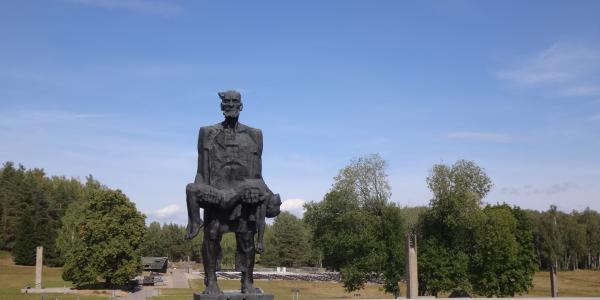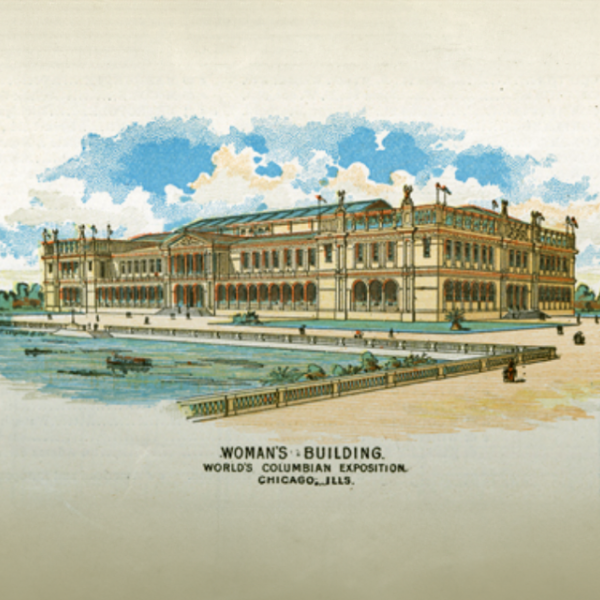Interview with historian Anika Walke
As German troops began to march into the Soviet Union in 1941, a terrifying practice of Jewish extermination took hold: “Holocaust by bullets.” Instead of being deported to camps such as Auschwitz (the common condemnation of German, Western and Central European Jews), Soviet Jews were gunned down in mass killing actions where they lived. Other Soviet citizens were shot or died of hunger and occupation terror; several hundred thousand were deported for forced labor. Historian Anika Walke, a Faculty Fellow in the Center for the Humanities, focuses her current book project on the remembrance of occupation violence and genocidal killings in Belarus, known at the time as the Belarusian Socialist Soviet Republic (BSSR). Below, she gives an early look at her ideas in “Bones, Ashes, and Dirt: The Long Aftermath of the Nazi Genocide in Belarus, 1941–2008.”
What is the Jewish history in Belarus before WWII?
As part of the so-called Pale of Jewish Settlement, an area within the Russian Empire to which Jewish subjects of the Tsar were confined, the territory of what is now the Republic of Belarus is situated in the historic homeland of Eastern European Jewry. Jews constituted a major part of the population, and their presence left an imprint: even many non-Jews spoke Yiddish, and Jewish artisans and laborers had been instrumental for the development of the economy. For a time, Jewish theaters, publishing houses and Jewish schools thrived in the young Soviet Union. In the late 1920s and 1930s, however, secularization campaigns resulted in the closure of synagogues and most other Jewish cultural institutions. At the same time, the Soviet Union was one of very few states in interwar Europe where antisemitism did not rule law or politics. Individual Soviet Jews did not have to fear physical assaults or pogroms, and nominally they had access to all spheres of life including education, employment, or housing. It was the expressions of a collective identity that were erased. In Poland, in contrast, Jews were restricted from access to universities, they were fired from jobs, they were beaten up and assaulted by citizens and police, but they were allowed to maintain synagogues and institutions of Jewish religion and culture. Nazi Germany at the time was working to eliminate both the individual and collective existence of Jews. So, the Soviet Union undermined the free development of Jewish religion and culture, but it did not condone attacks on Jews as people.
In broad strokes, how did the German occupation unfold in Belarus and how were its people affected?
World War II began in the BSSR with the invasion of German troops in June 1941. By fall 1941, most Jews were confined to a ghetto, the largest one in Minsk, where about 70,000 Jews were interned. Often, these ghettos existed only for a short period of weeks or days, and they primarily served to gather Jews in preparation of genocide. Beginning in August 1941, German authorities, supported by auxiliary troops and local police that included Ukrainians, Lithuanians, or Belarusians, began with the systematic extermination of Soviet Jews, rounding them up and shooting them at pits or trenches just outside their hometown. By early spring 1942, the majority of the Jews of Belorussia had been killed.
Other Belarusians had the chance to survive if they did not resist the Germans, and some even benefited when they actively served the German cause. But the civilians were brutalized, too — they were deported for forced labor in Greater Germany or in labor camps, hundreds of villages were burned down, and thousands of people were killed because they were suspected of helping Soviet partisans or Jews or for being Communists. In response, a large partisan movement developed, eventually mobilizing 380,000 Belarusians, to fight the Germans.
In the course of the war, however, between a quarter and a third of the BSSR population lost their lives, among them up to 800,000 Jews. The economy and the country were destroyed on a scale that is hard to imagine. After liberation in 1944, thousands of people literally lived in dugouts in the ground because most of the housing stock in both rural and urban areas had been destroyed during the war.
How has this period of history been taught and remembered? What stories are highlighted and what stories are omitted?
Throughout the Soviet period, the history of World War II — which in the region is actually called the Great Patriotic War — was remembered primarily as the moment in which the Soviet population, the Communist Party, and the Soviet government joined forces to defeat the German invaders. The Holocaust, the systematic extermination of Soviet Jews just because they were Jews, was not acknowledged officially and thus was not part of the official memory culture. Some Jewish survivors, however, often tried to place small memorials on the killing sites. In the years immediately after the war, Soviet authorities often took these down or punished people for establishing these monuments. The logic was that all Soviet citizens suffered equally, and to highlight one nationality’s particular suffering was an expression of chauvinism. Only since the breakup of the Soviet Union in 1991 are the efforts to mark the killing sites permitted, though rarely does the initiative to do so come from state or municipal authorities.
Why is it important for Belarus to recover and respect this history?
I think Belarusian society needs to develop a way to commemorate the Holocaust for two reasons. For one, Jewish culture has made a huge impact on the historical development and the cultural heritage of the region: Jewish history is part of Belarusian history. To ignore the fact that neighbors, classmates, or colleagues of the wartime population were singled out to be killed, is to ignore that they existed. Secondly, to remember the Holocaust challenges Belarusian society (and most other European societies) to consider how non-Jews responded to the mobilization of antisemitism and the violence against the Jewish population in their midst. I’ve said before that some Belarusian participated in rounding up Jews, perhaps even shot them, and acquired their belongings or even homes. To recover the history of the Holocaust, in other words, is a way to face up to difficult questions. It requires that modern societies analyze and understand how genocide is possible, how communities fall apart, how people turn against each other, and to create conditions in which that does not happen.
Is there anything that made a particular impact on you during your research?
I think what startles me more than anything is the ubiquity of the killing sites and their locations. Because there were so many Jews in Belorussia and most of them were killed in or near their hometowns, you’ll find mass graves in almost every town or village. They are usually very close to the edge of the settlement, and often you wouldn’t expect them where they are — in the middle of a field, tucked away in the forest, and if you wouldn’t know that they are there, or if there would be no memorial (which for the longest time was the case), they would be invisible. One of them, near the town of Mir, is at the same spot where before the war Jewish residents of the town used to go for walks and picnics on the weekends. It’s green, a little river is within view — and beneath the ground there is a grave for over 700 Jews, shot in August 1942. What does it mean for locals to live near these graves, to stumble upon them in their daily lives — that’s one of the questions I explore in my current research project.






